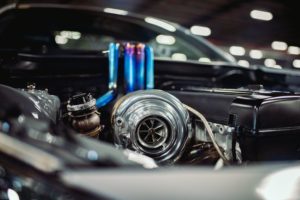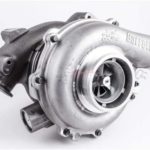Quick Navigation
Making a car’s turbo flutter may seem daunting at first, but it is a simple task that anybody can do.
One must first find the necessary components and equipment to make a car’s turbo flutter.
In other words, there are many ways to make turbo flutters, all of which will be discussed in more detail in the following few paragraphs.

However, if you’re new to the world of automobile modifications and turbocharged engines, turbo flutter may be something you’ve never heard of.
Also, these turbo flutters make a unique sound that some car enthusiasts like and others don’t.
Without further ado, we will explain in this comprehensive guide all you need to know to effectively create turbo flutters, including some essential tips and techniques and the advantages and downsides, so let’s get started!
Does Turbo Flutter Damage the Turbo?
The flutter is a turbocharger’s sound as it attempts to push air. However, failing due to the closed throttle.
When you hear a fluttering sound, it is the sound of air escaping back through the turbo as the compressor wheel struggles against this motion.
Experts describe turbo flutter as harmful to the engine and suggest that it may be avoided in some situations.
Because of this, the load that is placed on the bearings of the turbo significantly rises. If the engine is under a heavier load or the boost level is greater, it might cause early wear on your turbo.
In addition, when you let off the gas, the throttle body closes, giving you a momentary boost in intake pressure but preventing airflow.
Because the air needs to go someplace, the turbocharger is where it goes next.
Another reason is that the turbo flutter is an improper waste gate spring or setup. Only a technician can perform this adjustment thoroughly, as manual flutter might cause more severe engine damage.
Other possibilities include a leaky compressor housing or seal and an outdated turbo that is no longer functional.
Aftermarket parts and improper re-calibration may also cause this. These are all things to keep in mind before making any turbo changes.
Furthermore, turbo flutter is frequently caused by insufficient back pressure passing through the turbo, putting an abnormal amount of stress on the turbo.
In other words, turbos are composed of solid and robust materials that can withstand this high back pressure, but their lifespan will be significantly reduced if there is too much flutter.
Minor wear is unlikely to necessitate the purchase of a new turbo. However, if the turbo flutter has grown too regular, it may be time for a replacement.
How to Make a Turbo Flutter
You might wonder how to get turbo flutter with blow-off valves (BOV) for your automobile. If this is the case, you are not alone.
This issue impacts hundreds of vehicles and may be quite aggravating. But don’t worry. We’ve got you covered!
5 Different Ways to Make a Turbo Flutter
The following paragraphs will address your question: How do you get turbo flutter? The knowledge provided here should assist in your understanding of the turbo flutter’s fundamental parts.
1. Adjust Your BOV (Blow Off Valves)
Your first and greatest priority should be to ensure that the BOV is correctly set.
To begin adjusting the BOV, rotate the cap, which increases the spring force on the piston.
Then, as indicated on the top of the lid, spin the cap clockwise in the direction of hard.
After that, you’ll need to reduce the spring force on the piston.
This is accomplished by spinning the cap anti-clockwise in the direction of soft, as shown on the top of the lid.
When the boost is let out of the system, the BOV should emit a PSSSH sound if it has been calibrated correctly.
2. Raise the Spring Load
You’ll need to raise the spring preload to accommodate it if it doesn’t. A more significant spring preload will result in a flutter at low rpm and a lower sound at high rpm.
Increasing the blow-off valve spring preload is another treatment for turbo flutter. These differ from wastegates positioned on the turbo’s intake side.
Raising the spring preload, you may make the engine noisier at low RPMs.
There are several methods for increasing spring preload, so if you’re searching for a solution, this should be an excellent place to start.
However, in reality, the backport of the blow-off valves is never pressed. Therefore no air escapes during regular operations.
3. Utilize Intercooling Pipes
This intercooler functions as an air-to-air radiator. The hot turbo air enters at one end and cools as it goes through the intercooler before entering the engine at a considerably lower temperature.
In other words, if you have a turbo flutter with BOV, you’ll need new intercooler pipes with a BOV spot.
Then use that plate to block the previous diverter/BOV with a metal intercooler and a short, straight intake. Also, a turbo with fewer fins will perform better.
4. Use Open Box Air Filter
Because there is no airbox, open box air intake systems boost sound and likely make the turbo flutter.
As you speed, it makes a distinct sound of air rushing into the intake. To allow for better air movement, they are open and extensively exposed.
Furthermore, open box air intake systems are reported to increase the performance of your car by 5-20 horsepower.
This number varies according on the brand and model of your car.
5. Raise Boost Pressure
Boost pressure refers to the amount of extra air forced into the engine.
It is customizable by adjusting the amount of exhaust gas passing through the turbo.
Turbos often feature a wastegate that stops boost from increasing further and directs exhaust to the atmosphere, which may make your car sound incredible.
In addition, over boosting can be caused by a faulty wastegate or a weak remap and most vehicles now feature an electrical boost system.
All that is required to enhance the boost of these engines’ turbos is to tune your ECU, commonly known as a performance chip.
Are Turbo Flutters Worth It?
To be honest, they aren’t worth it and are often unsafe.
While it may not do any harm to your vehicle, it is not safe to drive with it.
The loud noise can easily startle other vehicles, causing uncertainty on the road. It is also worth mentioning that turbo flutter can cause engine damage over time. Therefore, it is preferable to avoid it entirely.
The fluttering noise is caused by a turbo running in compressor surge, which is when the compressor moves through the air instead of pushing it into the engine.
This isn’t helping your turbocharger’s performance or reliability.
In other words, when compressed air has nowhere to go, the turbo rotational speed drops fast and seeks to push against the wheel.
This can result in premature turbocharger wear. However, closed throttle flutter on current turbochargers is unlikely to reduce turbocharger lifespan significantly.
However, the cost of replacing a turbo might vary based on the vehicle’s model and the difficulty of the repair. A turbo might cost anything from $1,600 to $3,500 to replace.

Pros and Cons of Having a Turbo Flutter
In this section, we will use a table to help illustrate the benefits and downsides of having a turbo flutter. There are both positives and cons to having a turbo flutter.
Some individuals find it exciting, while others find it disturbing. It is ultimately up to the person to determine whether or not they appreciate the experience.
| PROS | CONS |
| A turbo flutter is a great way to have more power and speed while driving. It can also help with the handling of your car | Some people are not very happy with the sound of turbo flutter. It can be a little bit loud and may make other drivers look out for you when you’re driving. |
| It’s really cool modification to add to your vehicle | Reckless use of turbo flutters can cause premature turbocharger wear |
| It will not cause any harm to your engine | The compressor surge can damage your turbocharger |
| It is unlikely that closed throttle flutter on today’s turbochargers would make the turbochargers last less than they should. | The sludge has the potential to disrupt and damage some of the turbo bearings. The use of fully synthetic oils is an effective approach for the prevention of potential issues in the future. |
Conclusion
You should now know the basics of turbo flutter, such as what it is and why it happens in your car.
The following strategies can assist you in making your car’s turbo flutter. First, ensure that your vehicle has good suspension and shocks.
Second, ensure that you have a reliable turbocharger and ensure your engine is in good working order.
By following these simple steps, you can make your car turbo flutter effectively and efficiently. Thanks for reading!

With comprehensive experience in writing exceptional quality articles and blogs about cars and related stuff, Daniel is one of the finest bloggers and a hardcore car lover we have. He is an ASE certified technician with an across-the-board experience of 10 years in the industry. He could not help tinkering with anything he got his hands on from a young age, which led to his remarkable career in the automotive repair industry.
When he is not under any hood, you can find him on the water or in the woods to pursue his passion for hunting and fishing. He has been writing for multiple sectors and is a regular contributor to several publications.
He currently owns a Nissan 300ZX TT and a Pearl Yellow but plans to upgrade it to 550 HP. His favorites include the Koenigsegg CCX and Lamborghini Diablo 6.0 VT, but for him, the Ferrari 360 Spider is one of the sexiest cars that exists to date.
Being an avid world traveler, he has spent most of his time analyzing the automotive markets, latest technology, and local favorites to enhance his knowledge base. He is currently living in North Caroline, where it’s all about food and coffee and, of course, cars.



![How to Make Car Coasters [Step-by-step Guide] How to Make Car Coasters [Step-by-step Guide]](https://carsupercare.com/wp-content/uploads/2022/11/How-to-Make-Car-Coasters-Full-Guide-150x150.jpg)